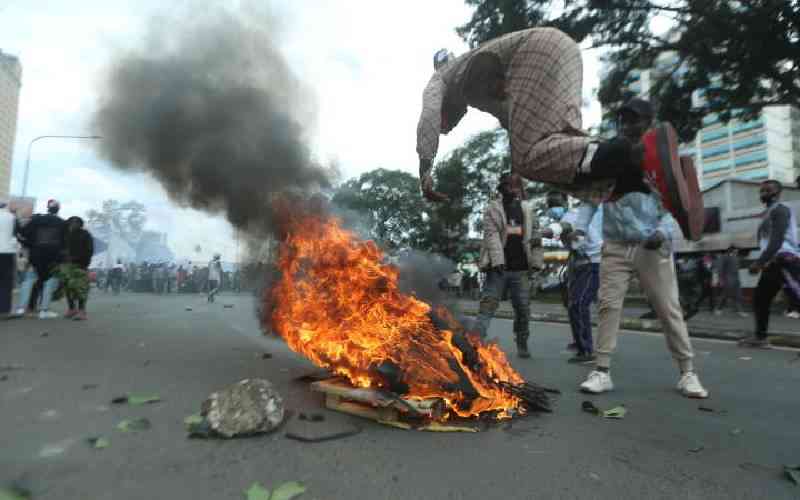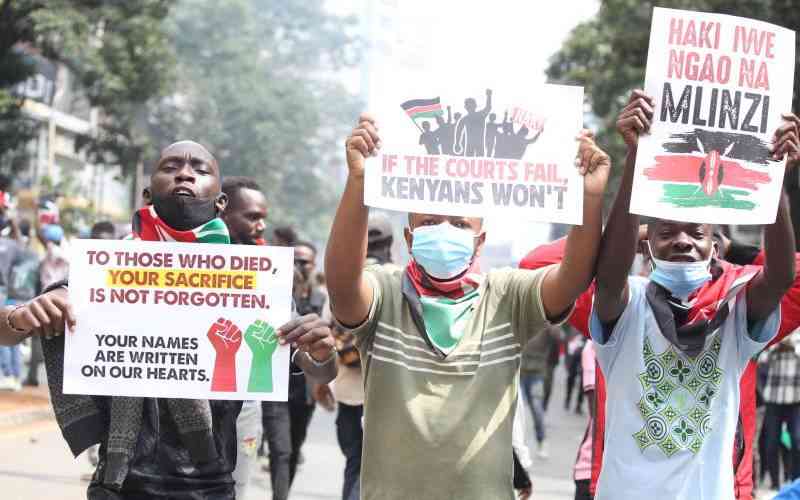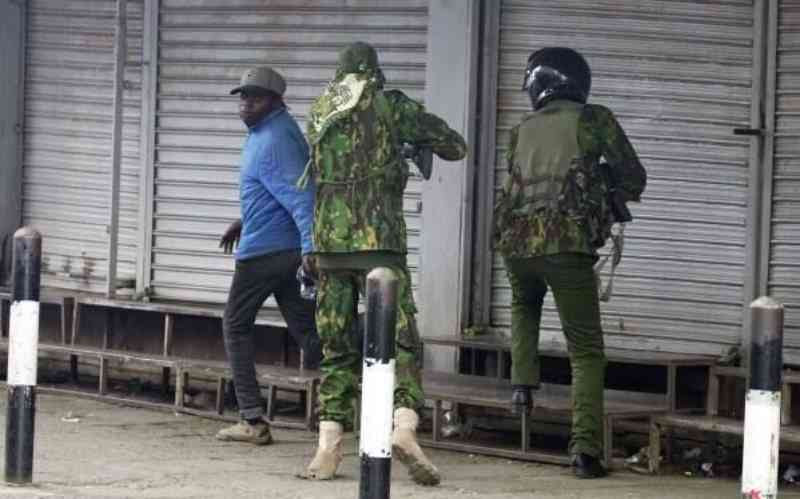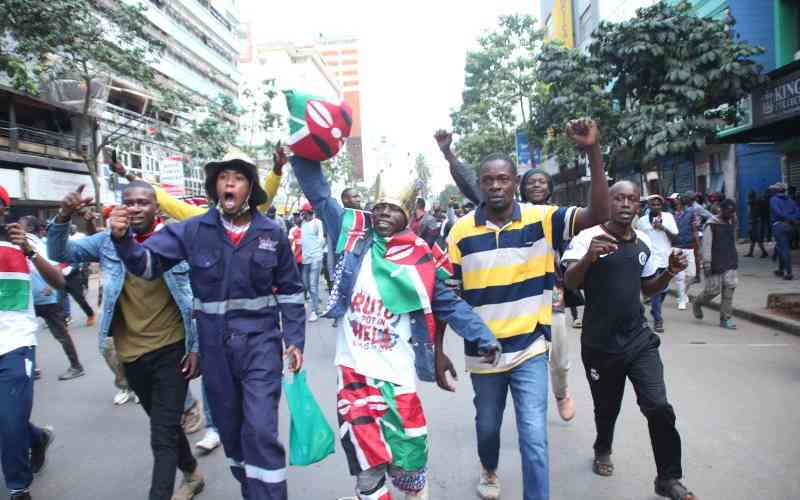Nairobi Gen protester in action during June 25th protest anniversary. [Collins Oduor, Standard]

Nairobi Gen protester in action during June 25th protest anniversary. [Collins Oduor, Standard]
In Zambia, 10,000 villagers were once under the watch of a single police officer. When a government official arrived in the region, the villagers were asked to walk 10 kilometres to meet the official. The instructions were passed through the policeman. At his word, all 10,000 thousand villagers obeyed-walking the distance,listening to the address and returning home without incident. No chaos, no disorder.
This account illustrates the power of authority-exousia. A fundamental duty of any State is to provide security through its institutions with the police maintaining order, preventing crime and ensuring public safety. In some countries, police officers are held in such high esteem that they are referred to colloquially as “the law.”
Exousia refers to the legitimate authority to command or make decisions. It is a form of power vested by the law. When one unarmed police officer directs ten thousand people with a single instruction, that is exousia in action.
In contrast, dunamis is power derived from force or physical ability. A 10-tonne truck in motion or a bullet from a gun illustrates dunamis. While both types of power are essential, exousia tends to supersede dunamis in maintaining public order. A slender police officer, backed by legal authority, can bring that 10-tonne truck to a halt with just a hand gesture. This balance is what sustains functional societies.
At 1:512, Kenya is below the United Nations recommended police-to-civilian ratio of 1:400. In a society where police authority is respected, one officer is theoretically enough to maintain peace among hundreds. Where respect for law enforcement is absent, however, order must be imposed through force-by truncheons, tear gas, and many times, bullets.




Last week’s protests in Nairobi were a stark demonstration of what happens when that balance breaks down. What began as a constitutionally protected demonstration spiralled into chaos after being hijacked by criminal elements. The police, overwhelmed by sheer volume of people, struggled to maintain order. Shops in the CBD were looted and burned. Tragically, lives were lost.
This breakdown reflects a deepening trust deficit between law enforcement and the public. The attacks on police officers, burning of police vehicles and stations and injuries on both sides are not just security concerns. They are indicators of a social rift. When citizens feel justified assaulting police officers and when officers resort to disproportionate force, exousia collapses and dunamis takes its place.
It is naive to imagine that mass protests can remain peaceful without strict organisation and mutual respect. In emotionally charged environments, even the most well-intentioned demonstrations can be co-opted by political operatives or opportunistic criminals. Rhetoric such as “Occupy State House” or “Seven Days of Rage” fuels a volatile environment with serious implications for national stability.
We must accept a difficult truth: No police force in the world can control an enraged populace solely through force. Law and order depend on mutual respect, accountability and clear lines of communication between the public and those tasked with their protection. Just as police misconduct must be condemned and prosecuted, violence against officers must also be met with firm legal consequences.
Before the next protest is called, Kenyans must reflect. Because doing the same thing repeatedly and expecting different results is, by definition, madness.
Mr Khafafa is a public policy analyst